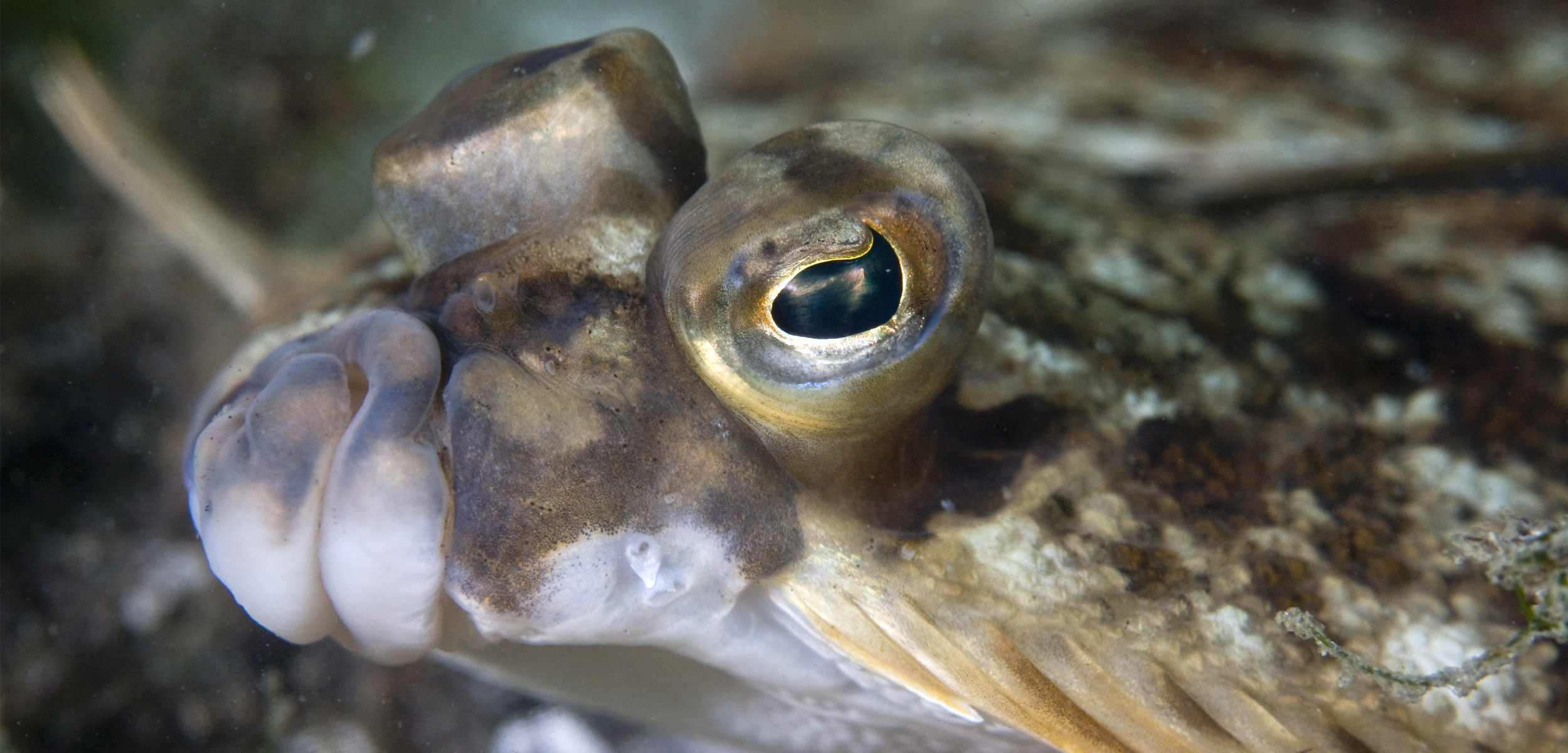The Changing Face of Parasitism
A 90-year record of fish parasites, unintentionally preserved in museum specimens, shows that while some species are booming, many are in decline. That’s not a good thing.
Article body copy
Washington State’s Puget Sound, like most ecosystems on Earth, is crawling with parasites. Everything from sinuous tapeworms to fleshy flukes infect the sound’s crustaceans, fish, and marine mammals. Most are insidious, wriggling through a host’s intestines with no outward trace. Others, including the slender crimson nematode Clavinema mariae, leave fish covered in welt-like sores.
Over the past few decades, Puget Sound’s population of C. mariae has exploded. “Every single flatfish that we pull up has these gross lesions on it,” says Chelsea Wood, a parasite ecologist at the University of Washington.
While Puget Sound’s C. mariae are thriving (a recent paper by Wood and her colleagues, for instance, shows their population increased eightfold between 1930 and 2016), other parasites appear to be suffering.
Contrary to their bad reputation, parasites are key cogs in healthy ecosystems, says Rachel Welicky, a member of Wood’s team and an ecologist at Pennsylvania’s Neumann University. Parasites are like an ecosystem’s connective tissue, Welicky says. “They connect all organisms together—they serve as food, they serve as predators, they serve as prey.” Parasites promote diversity through infection.
Take C. mariae, for example. Planktonic C. mariae float in the water column—their only goal being to be eaten, preferably by a tiny crustacean like a copepod. Once that happens, the parasite begins its journey up the food chain. C. mariae makes the infected copepod more likely to be eaten by fish such as English sole, a stout, diamond-shaped flatfish found along North America’s Pacific coast. Once eaten, the parasite worms itself into the fish’s tissue and causes those trademarked lesions.
Although C. mariae’s effects on English sole are not fully understood, research suggests the parasites may sap their energy, making them more susceptible to predators. Although the effect may be unpleasant, that actually helps keep the ecosystem humming.
“A parasite decline, to a person who just hears the word parasite, might seem good, but it’s not,” says Welicky.
Given their importance, Wood and her colleagues are on a quest to understand Puget Sound’s parasite populations. To do so, they’re studying English sole. The decidedly unattractive flounder-like fish, which has two bulbous eyes pressed onto one side of its flattened face, used to be a seafood staple in the region before the fishery was shuttered in the 1980s, in part because C. mariae rendered sole fillets unmarketable.
However, not everyone stopped trawling the sound’s floor for these worm-infested fish. For nearly a century, scientists working for the University of Washington’s Burke Museum of Natural History and Culture in Seattle have been collecting English sole specimens from Puget Sound for the museum’s sprawling ichthyology collection. These scientists soaked their catch in formalin and alcohol to save the fish, unknowingly preserving the suite of invertebrate interlopers that were squirming inside. This unintentional collection gave Wood and her team a way to track parasite populations through time.
Wood and her colleagues’ investigations have revealed the veritable bounty of parasites living in Puget Sound. In only 109 sole specimens, they found 2,450 individual parasites ranging from flukes to crustaceans. While it’s clear Puget Sound harbors a huge diversity of parasites, the researchers’ main goal is to figure out how each of these populations has and will continue to change.
Over the past 90 years, the temperature in Puget Sound has risen by 1 °C, and as much as 94 percent of the area’s shoreline has been modified by humans. By examining how parasite populations responded to these changes as revealed by the museum specimens, Wood and her team hope to glean information about how they may react to future change. So far, along with identifying the sharp increase in C. mariae, their examination of two other common parasites—a nozzle-mouthed parasitic worm and a flabby fluke—shows that their populations have declined over the decades.
Parasites are important for their own sake. But because of their intimate evolutionary relationships with their hosts, studying parasites also offers a largely untapped avenue for understanding the biology of larger animals, says Kurt Galbreath, a biologist at Northern Michigan University who studies how mammalian parasites respond to environmental change. “Sometimes we can use parasites to understand things going on inside the host that the host itself can’t tell us,” Galbreath says.
However, the time to preserve and study many of these ecological stowaways appears to be running out. According to a 2017 study, one-tenth of all parasites may be extinct in 50 years because of climate change or the extinctions of their hosts. “Parasites can be negatively impacted by environmental change just like giraffes or rhinos or any other free-living species,” Wood says.
Against that backdrop, Wood, Welicky, and their colleagues will continue to peer inside alcohol-soaked sole—piecing together the parasitic puzzle of the Puget Sound one worm-infested fish at a time.

